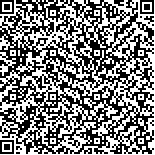| 摘要: |
| 解析城市轨道交通系统的功能结构对
于建立以轨道交通为骨架的城市空间结构至关
重要,其有助于优化城市空间布局,促进交通与
土地利用融合,进而推动城市可持续发展。本文
利用交通刷卡大数据,基于轨道交通站域的功
能相似性和邻接关系提出了功能站组的概念,
并形成了一套“站域功能分类—站组范围划定—
站群结构识别”的方法体系。以上海市轨道交
通系统为例,针对单个站域,构建表征站域土
地利用功能的连续客流时间序列,并依据时间序列特征分类得到站域功能类型;将多个具有相似的出行模式和土地利用功能的相邻站域划定
为功能站组;以功能站组为基本单元,采用社区发现算法,对功能站组间的客流交互网络进行分
析以识别站群。研究结果表明,城市轨道交通系统的“站域—站组—站群”层次化功能结构解析
方法综合了场所空间和流空间视角,有助于认识特大城市轨道交通系统的功能结构特征,并为轨
道交通系统的发展提供多层次的空间优化建议。 |
| 关键词: 城市轨道交通 功能结构 社区发现算法 交通刷卡大数据 流空间 |
| DOI:10.13791/j.cnki.hsfwest.20240305 |
| 分类号: |
| 基金项目:国家自然科学基金重大项目(42192580、421925
83);国家重点研发计划课题(2020YFC1512002);
自然资源部国土空间智能规划技术重点实验室开放
基金(20220308) |
|
| Hierarchical functional structure analysis of urban rail transit systems: Using Shanghai asan example |
|
JIAO Hongzan,HUANG Shibiao,YANG Shanshan,ZHOU Yu
|
| Abstract: |
| In recent years, with the rapid advancement of urbanization in China, the expansion and
extension of urban spatial scope have led to a significant increase in the number of motor vehicles
within cities. Consequently, traffic congestion, environmental pollution, greenhouse gas emissions,
and energy consumption have become increasingly severe challenges faced by large cities. In order
to address the challenges posed by rapid urbanization, the construction of rail transit has entered a
period of rapid development, and Transit-Oriented Development (TOD) has gradually become an
important form of organizing urban spatial structures in major cities.
The TOD model refers to the planning and construction of mixed-use communities within
the spatial scope of rail transit stations (i.e., within walking distance of rail transit stations and
surrounding core commercial areas), integrating residential, commercial, office, and public activity
functions. Traditional TOD development focuses on the functions surrounding individual stations
and can be understood from the perspective of “place space”. However, the TOD development
approach based solely on the “place space” perspective of individual station areas overlooks the
spatial connections of urban rail transit, resulting in lower levels of functional connectivity between
station areas. This leads to issues such as inadequate passenger aggregation and convenience of
services, uneven distribution of daily passenger flows around rail transit stations, and insufficient
passenger sources.Therefore, analyzing the functional structure of urban rail transit systems is
crucial for establishing urban spatial structures centered around rail transit. This aids in optimizing
urban spatial layout, promoting the integration of transportation and land use, and thereby driving
sustainable urban development.
Currently, with the rise of urban spatiotemporal big data research, we have access to smart
card data from rail transit systems. This data records the entry and exit swipe times and station
information for each rail transit passenger, offering advantages such as large sample size, high
precision, and detailed spatiotemporal information. Utilizing smart card swipe data, it can not only
statistically analyze the hourly passenger flow time series for each rail transit station, characterizing
the “place space” of rail transit station areas, but also track the spatiotemporal connections of
passengers boarding and alighting between stations, establishing passenger origin-destination (OD)
relationships between stations, thus representing the spatial interaction “flow space” of rail transit
station areas. The similarity of passenger flow time series between stations can be used to classify
and infer the functional attributes of station areas, while passenger flow connections betweenstations are important reflections of spatial interaction relationships between station areas. The functional attributes and spatial interactions of rail transit
station areas enable the formation of hierarchical functional structures among TODs with different characteristics. Therefore, integrating the perspectives
of “place space” and “flow space” to analyze the hierarchical functional structure characteristics of urban rail transit systems has become a key issue in the
planning and development of urban rail transit. This study proposes a hierarchical functional structure analysis method termed “station area-station clusterstation
group”, utilizing traffic card data and emphasizing the functional similarity and adjacency of rail transit station areas.
Using the Shanghai rail transit system as an example, the research methodology includes: (1) constructing continuous passenger flow time series to
represent the land use functions of individual station areas and classifying station area functional types based on time series characteristics; (2) delineating
adjacent station areas with similar travel patterns and land use functions as station clusters; (3) employing community detection algorithms to analyze
passenger flow interaction networks between station clusters and identify station groups.
The research findings indicate that this method integrates perspectives from both spatial and flow space, which is significant for understanding the
functional structure characteristics of large-scale urban rail transit systems and providing multi-level spatial optimization recommendations for their
development. Based on the functional attributes of urban station areas and the spatial interaction between them, this paper proposes a hierarchical analysis
of the functional structure of rail transit systems, termed “station-site-group”. This provides a new approach and method for the hierarchical and systematic
analysis of the functional structure of urban rail transit systems. The research methodology facilitates the transition of TOD planning from “individual
station area planning” to “station group integrated planning”, effectively enhancing the integration level of urban rail transit and land use development. |
| Key words: urban rail transit functional structure community detection algorithm traffic card big data flow space |


